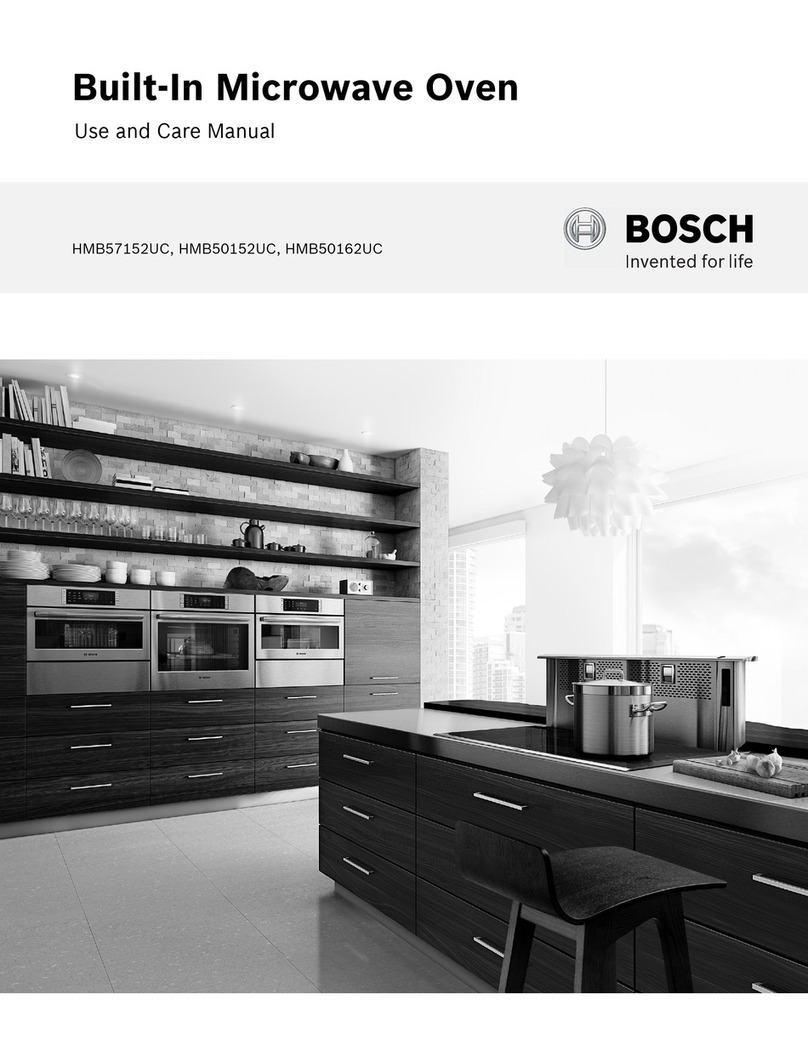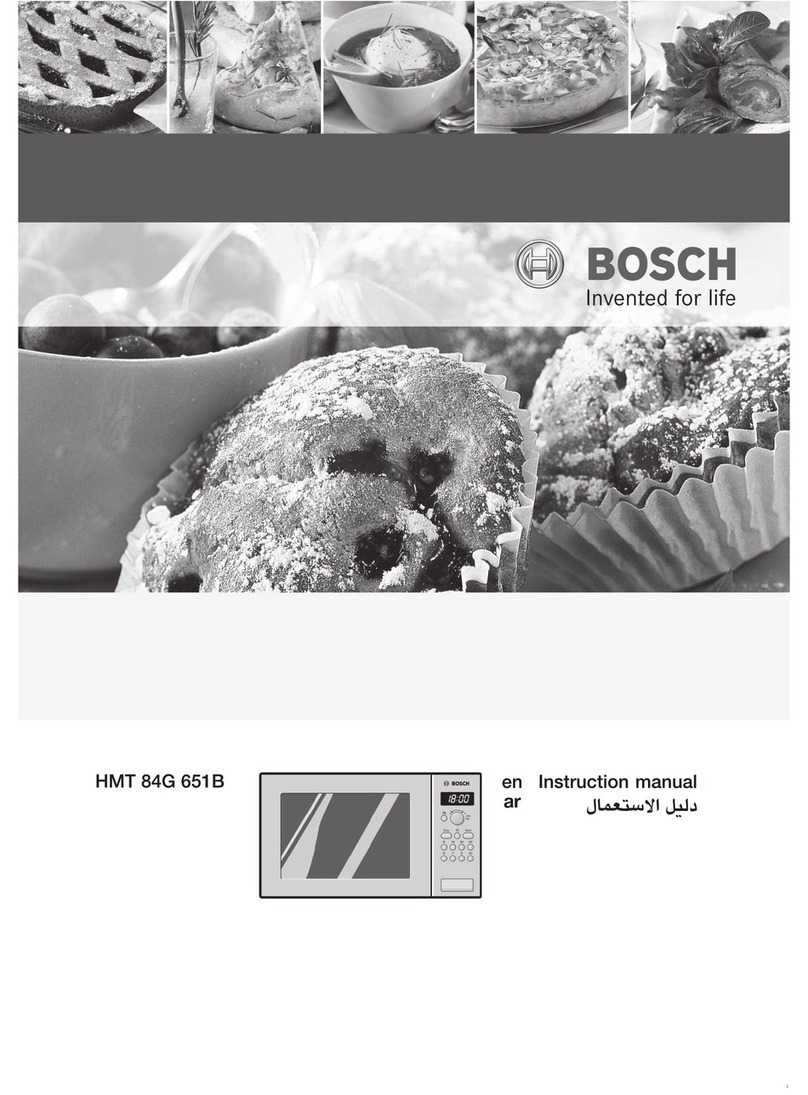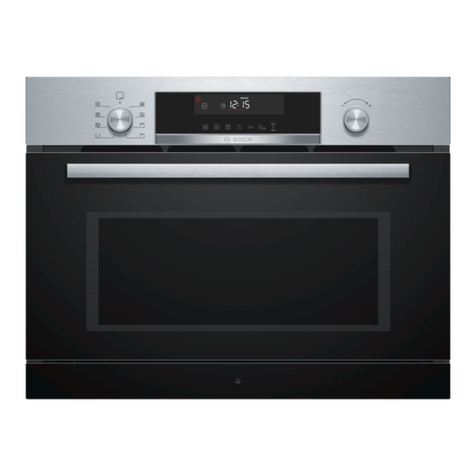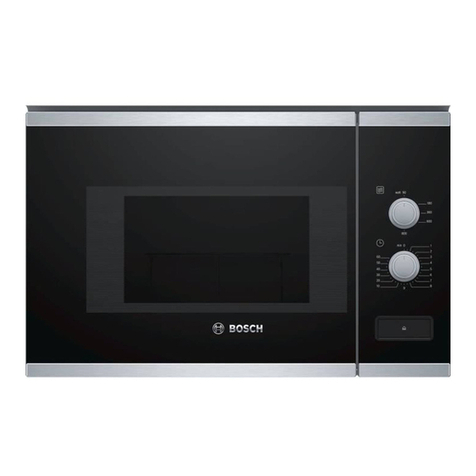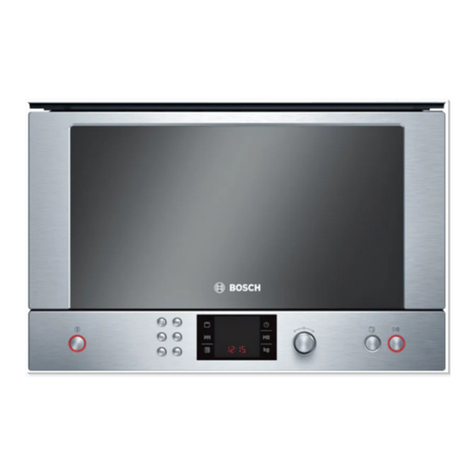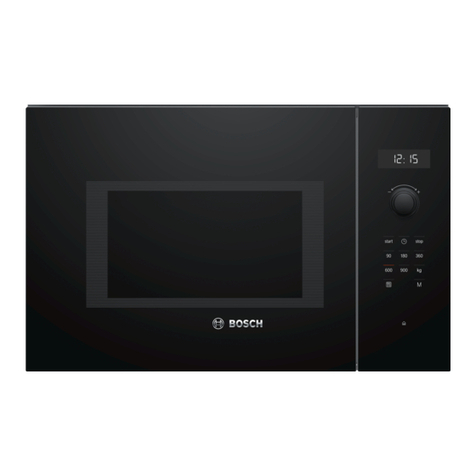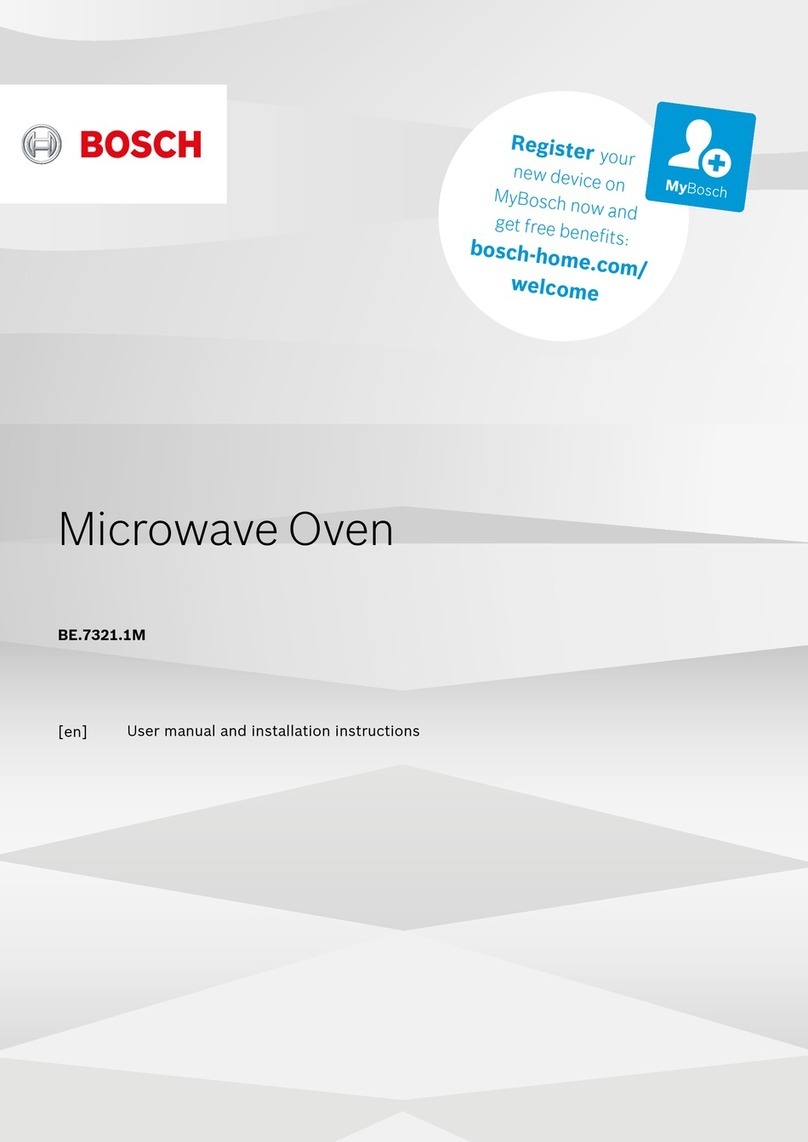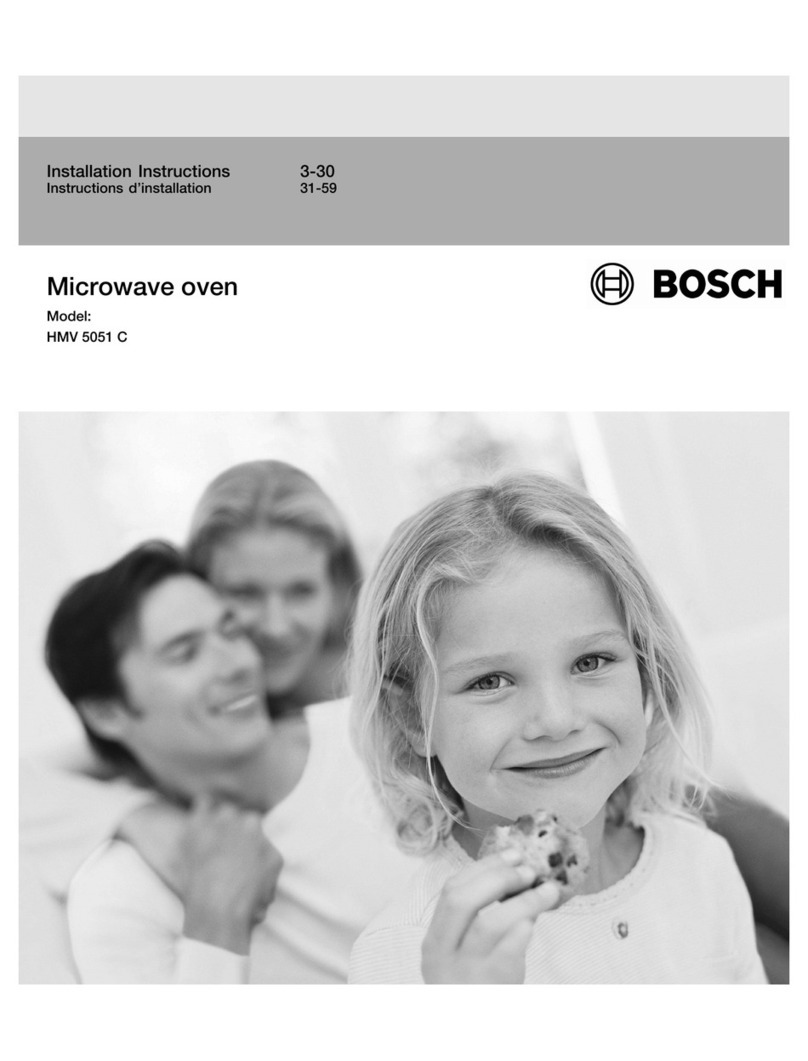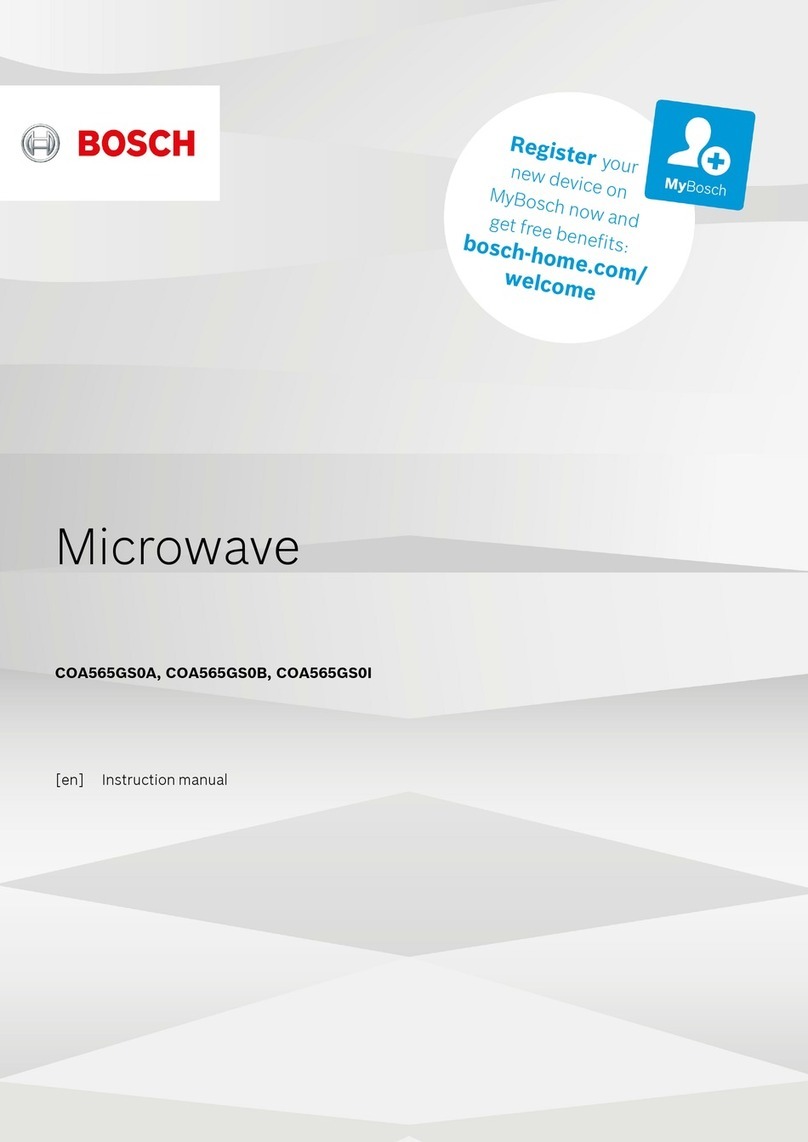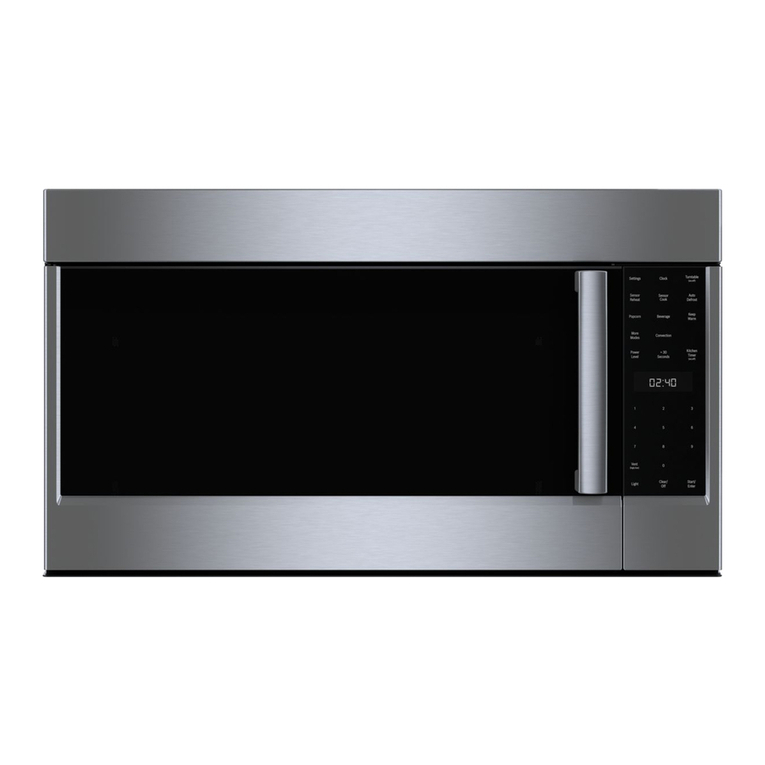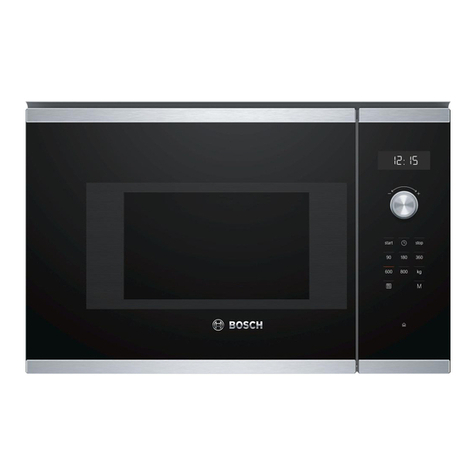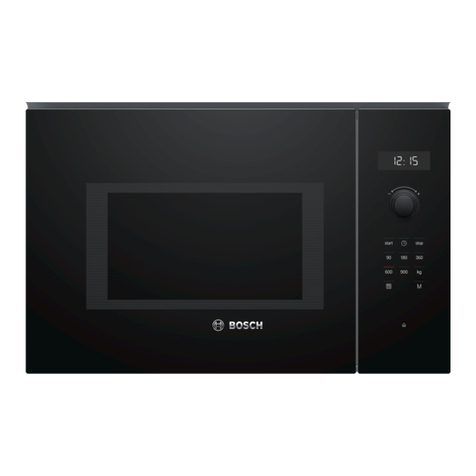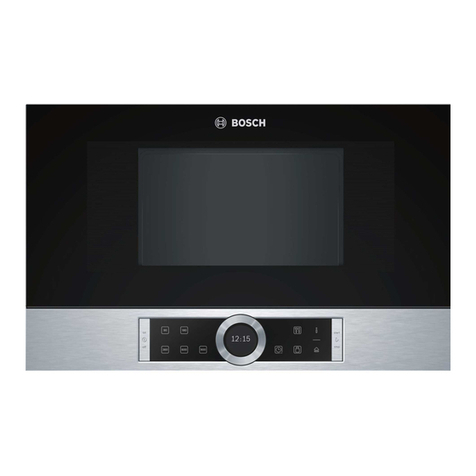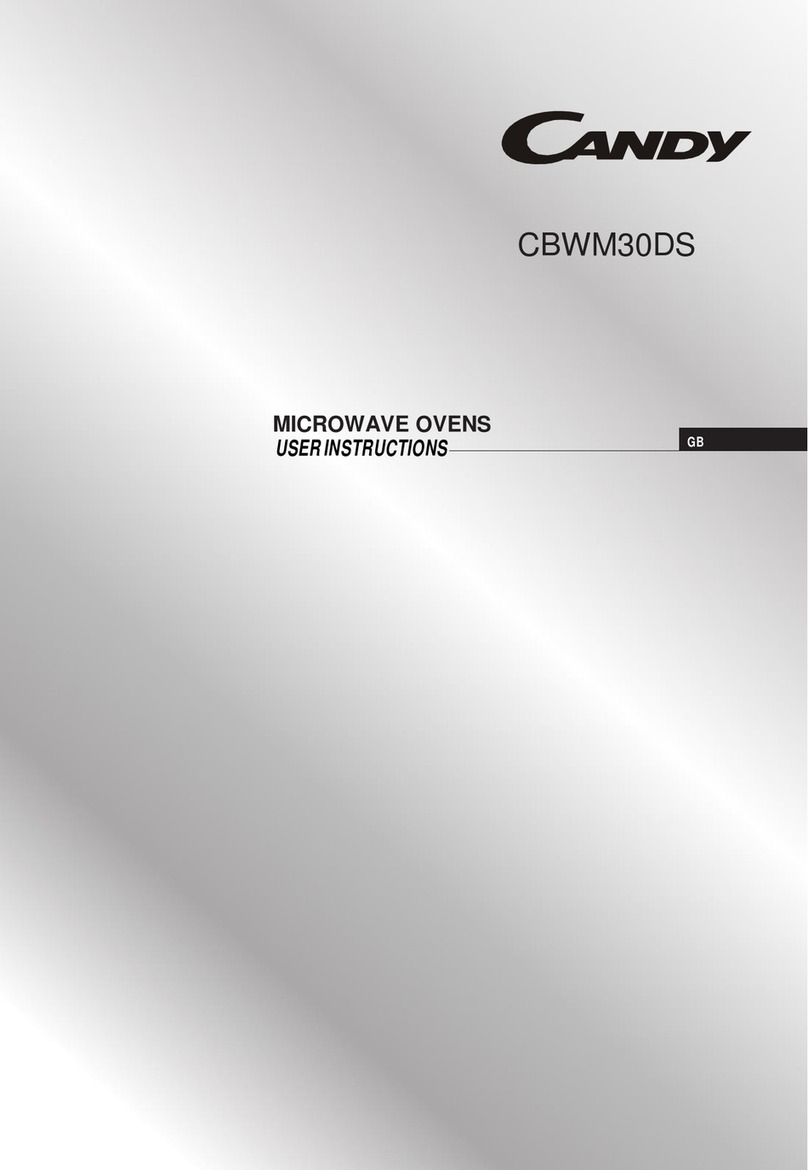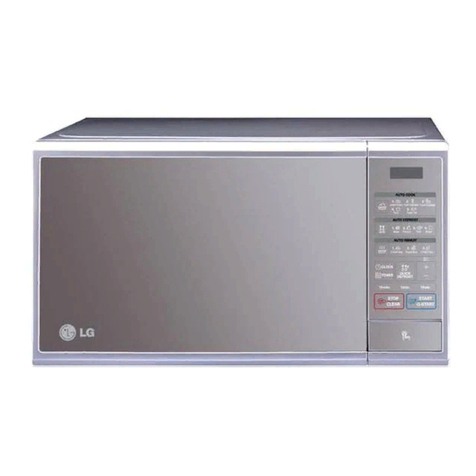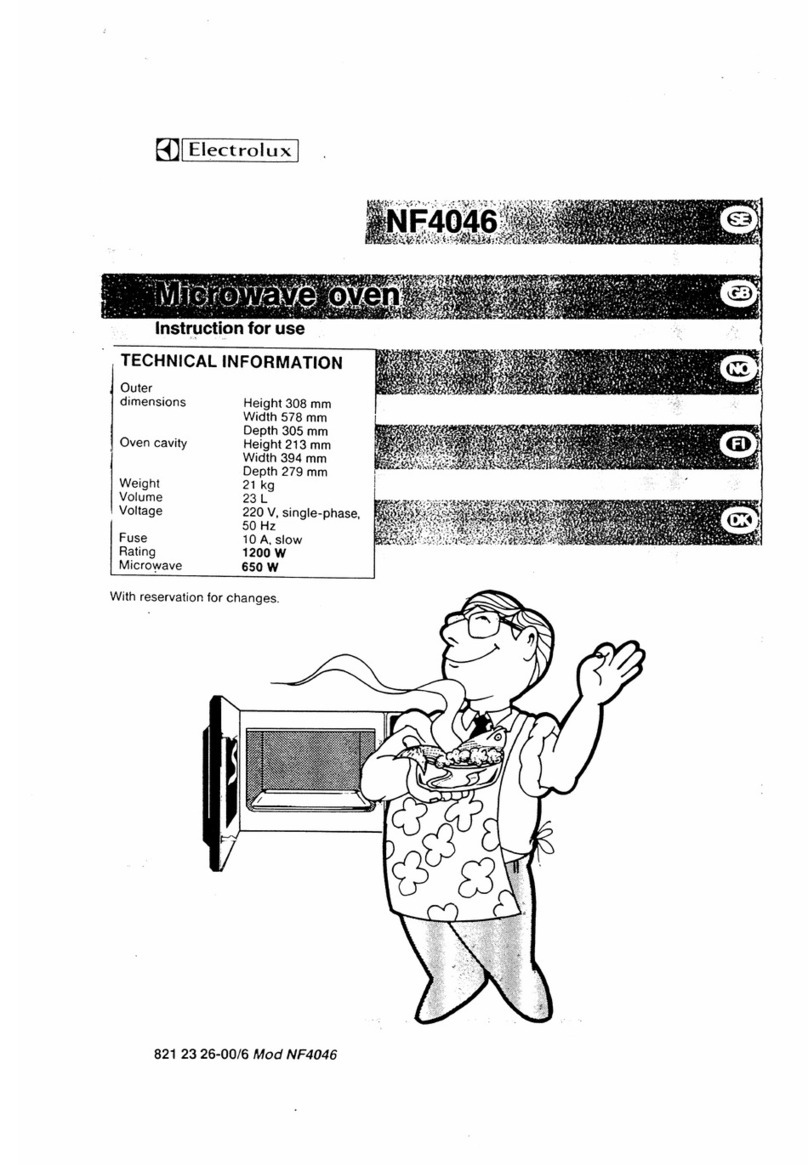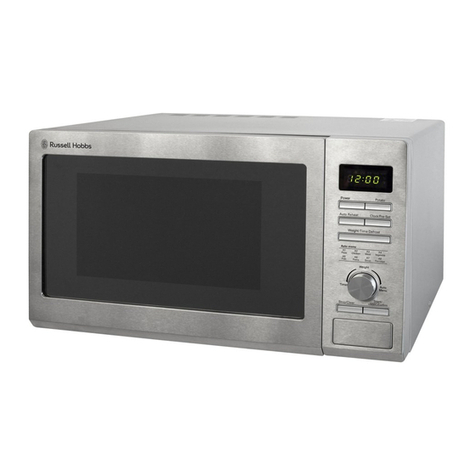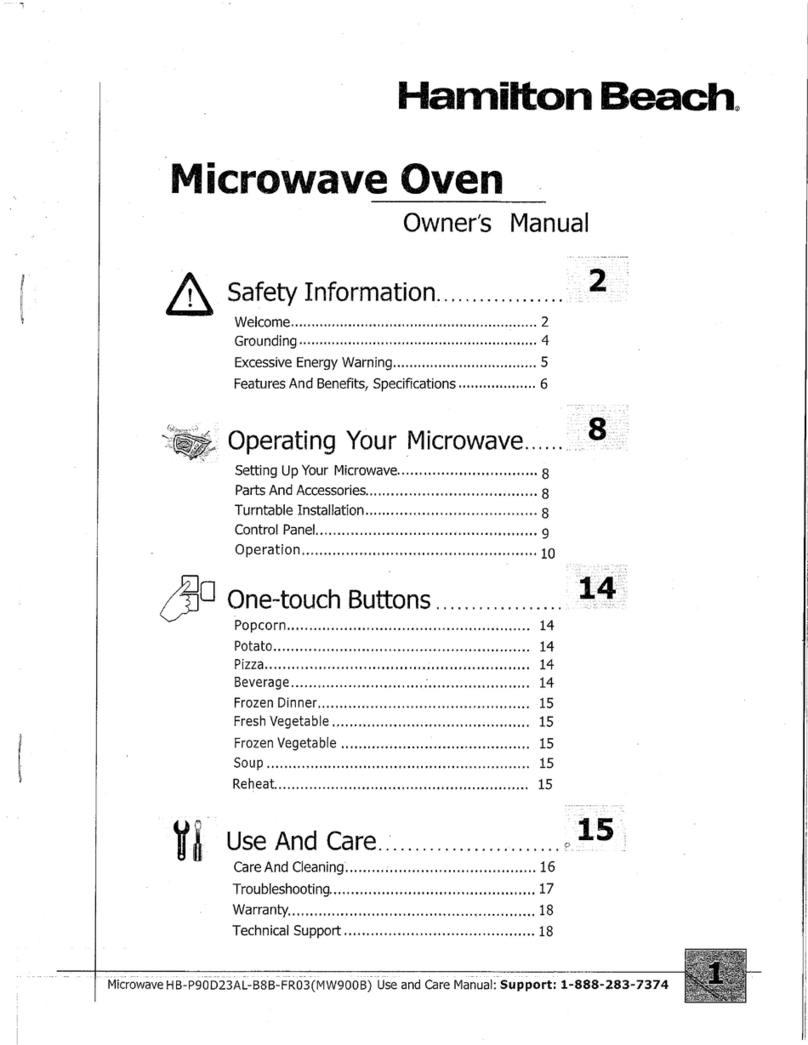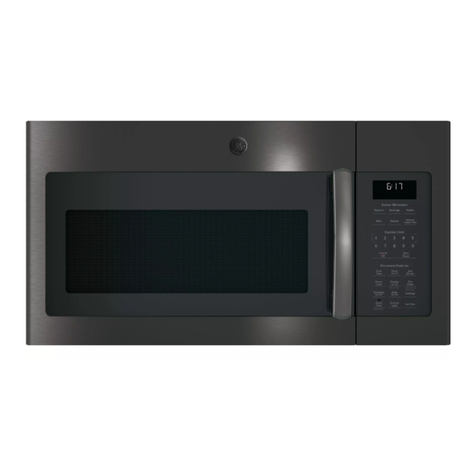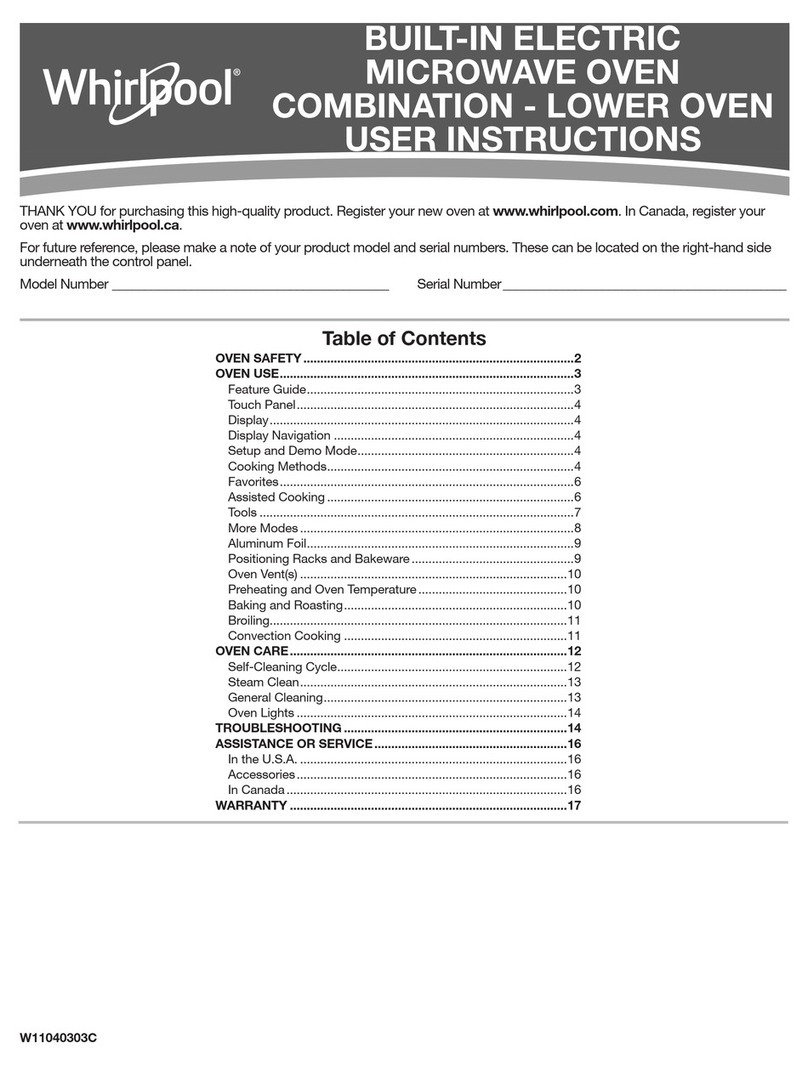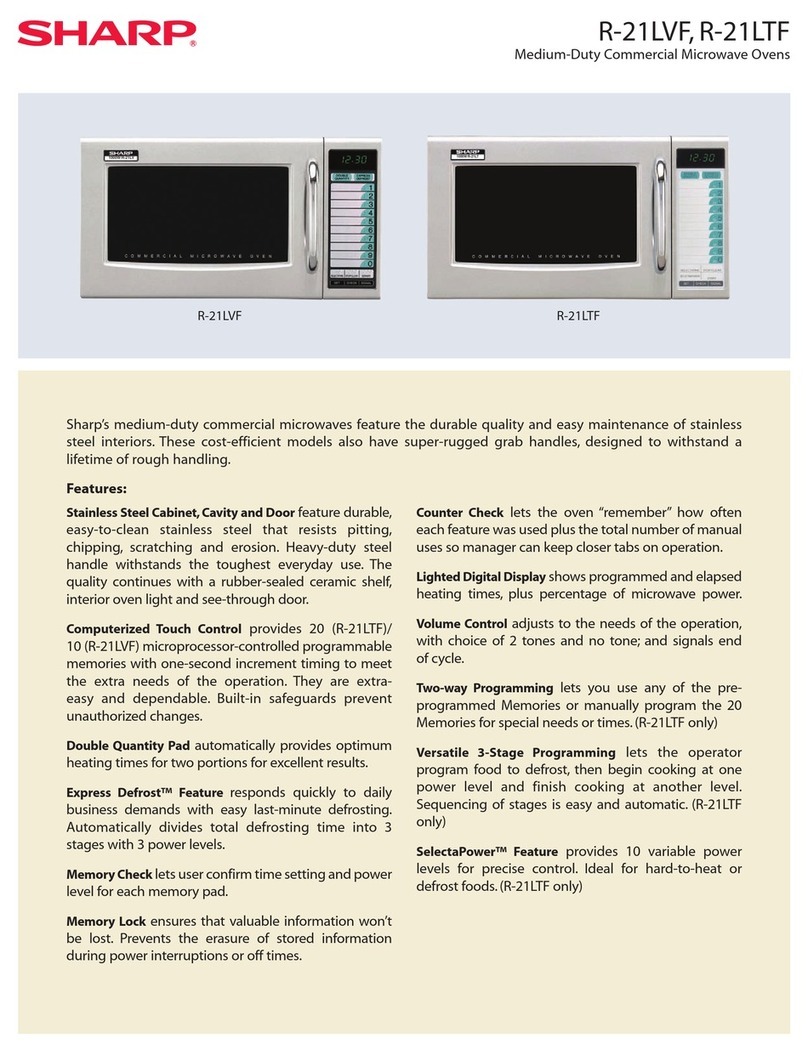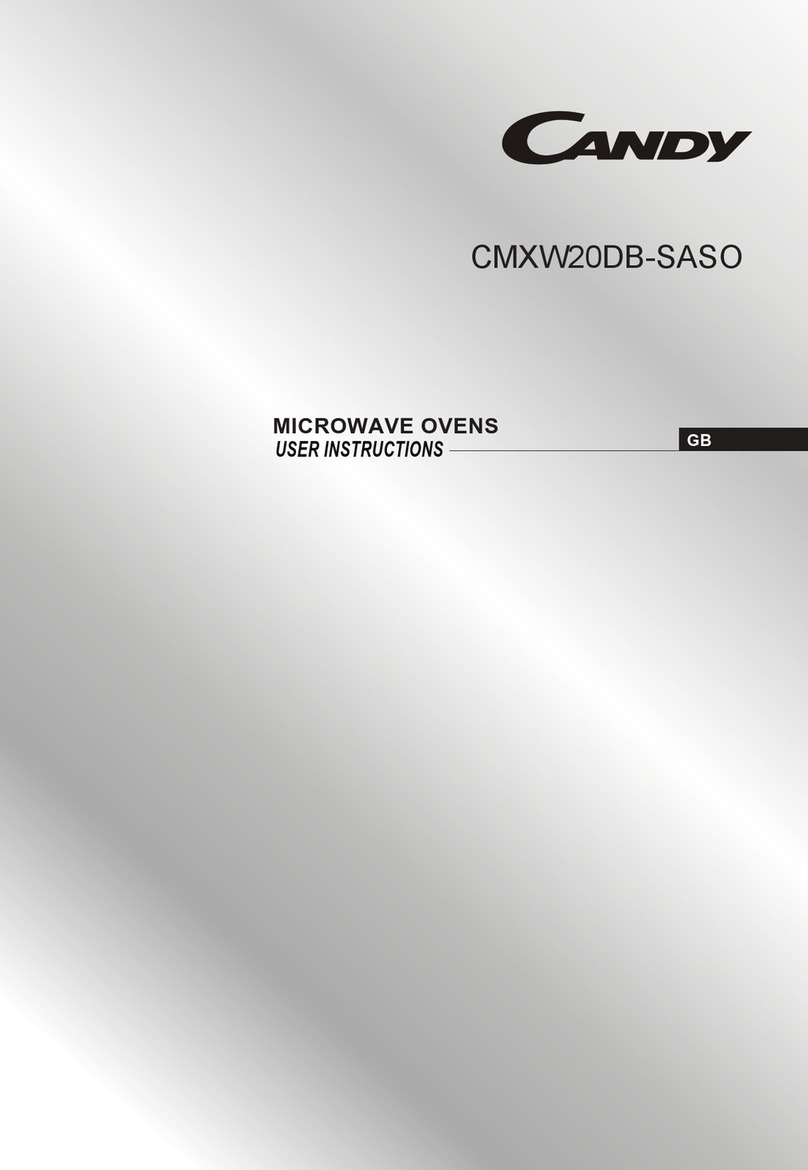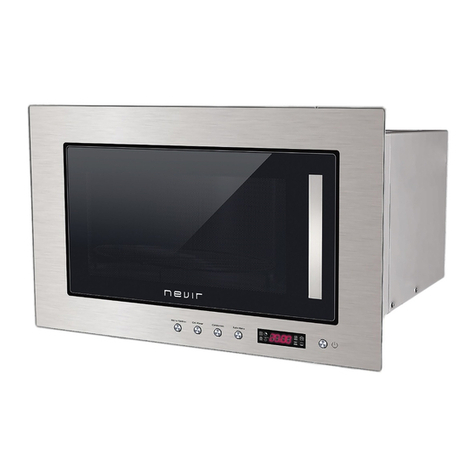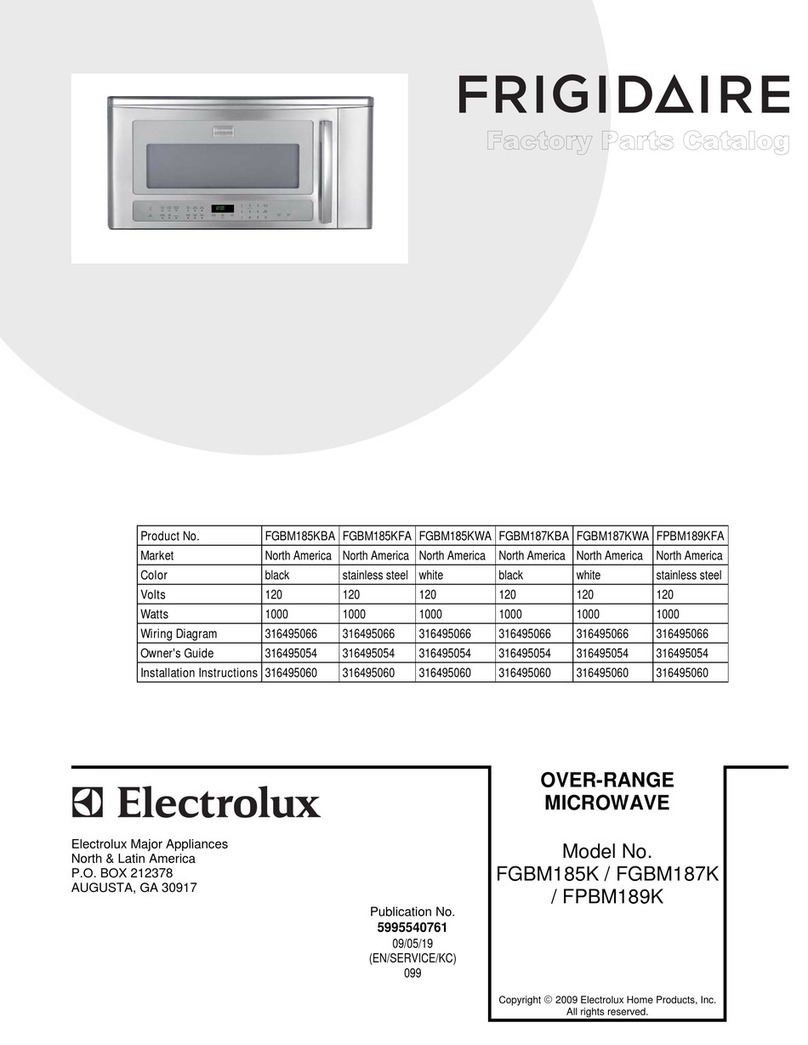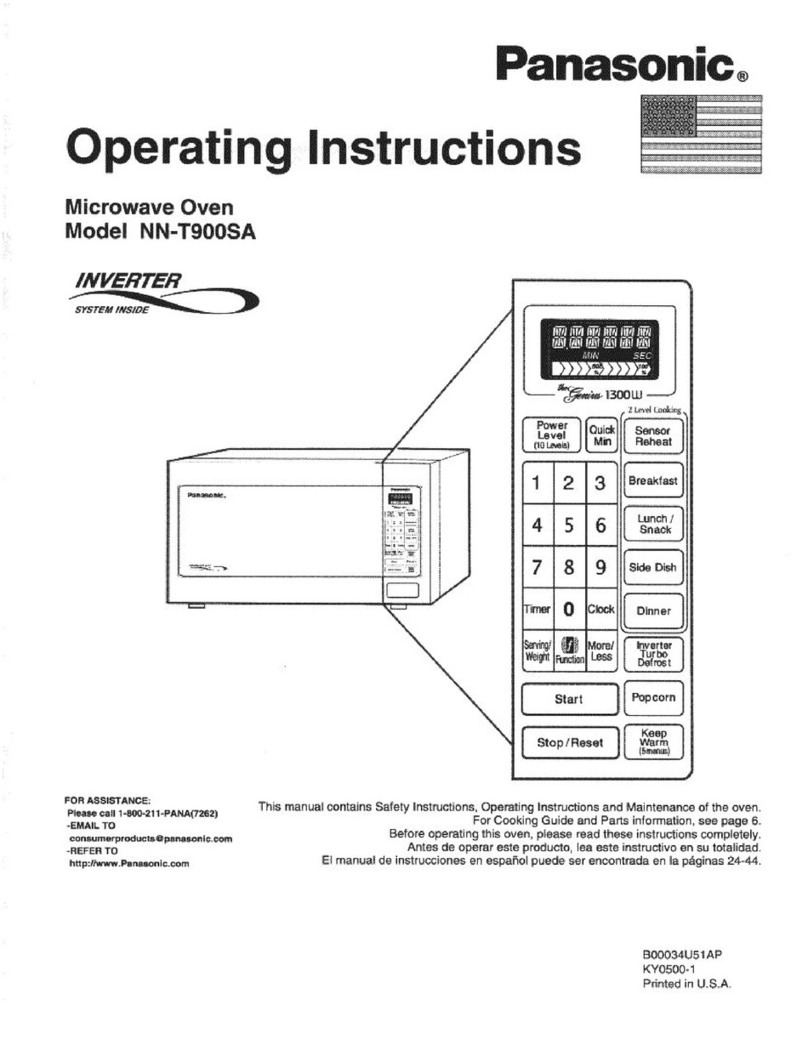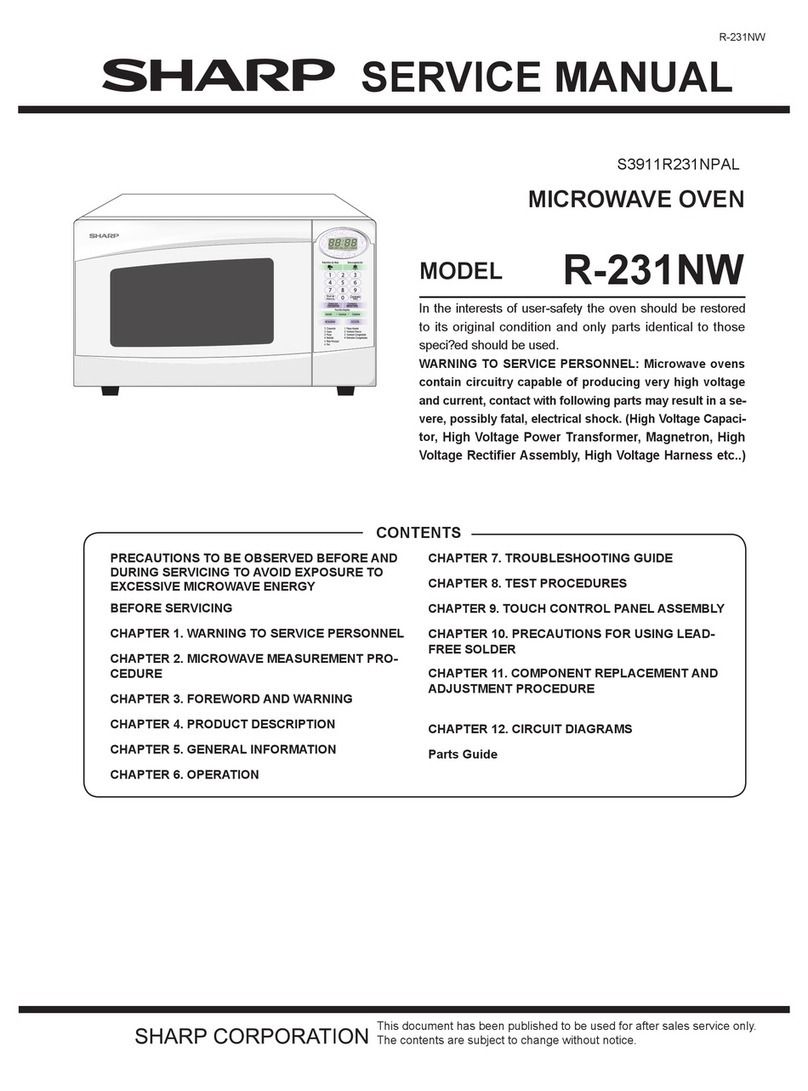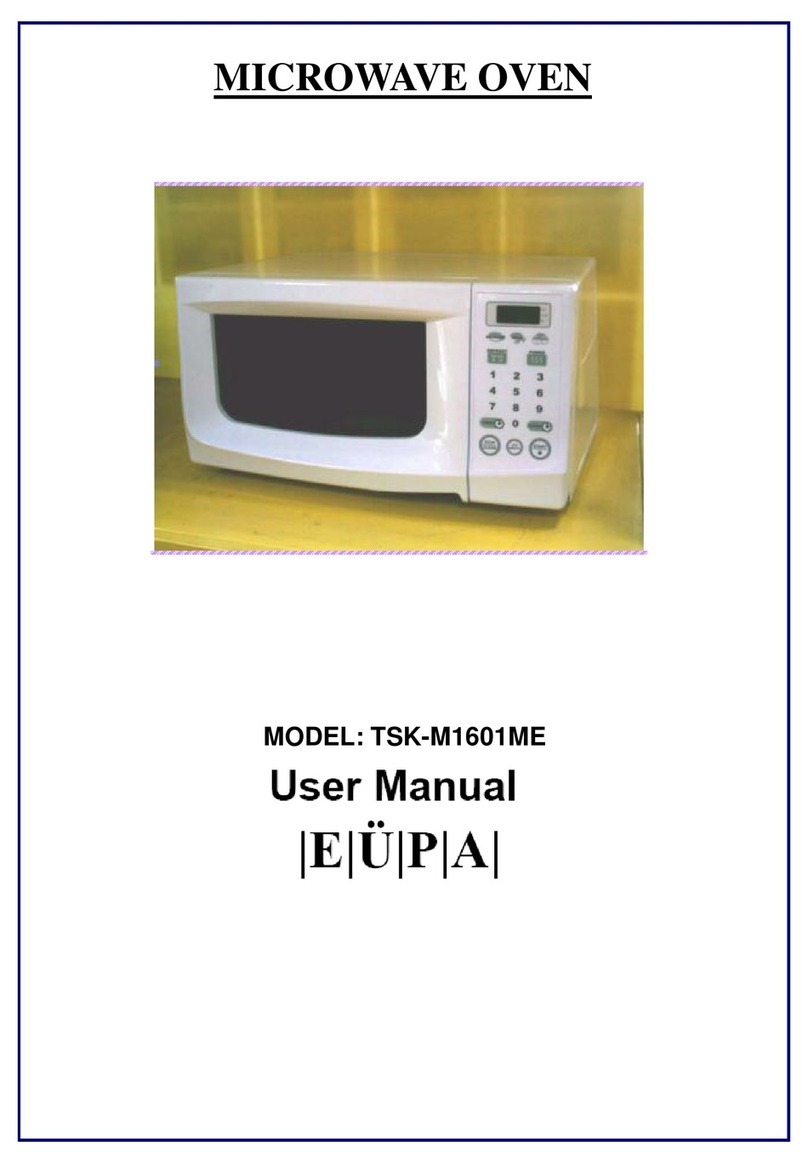
Cleaning and servicing en
11
WARNING‒Risk of injury!
Scratched glass in the appliance door may develop
into a crack.
▶Do not use any harsh or abrasive cleaners or sharp
metal scrapers to clean the glass on the appliance
door, as they may scratch the surface.
1. Read the information on cleaning products.
→Page10
2. Observe the information on cleaning the appliance
components or surfaces.
3. Unless otherwise specified:
‒Clean the components of the appliance with hot
soapy water and a dish cloth.
‒Dry with a soft cloth.
9.3 Cleaning the cooking compartment
ATTENTION!
Incorrect cleaning may damage the cooking compart-
ment.
▶Do not use oven spray, abrasive materials or other
aggressive oven cleaners.
1. Read the information on cleaning products.
→Page10
2. Clean with hot soapy water or a vinegar solution.
3. Use oven cleaner to remove very heavy soiling.
Only use oven cleaner when the cooking compart-
ment is cold.
Tip:To eliminate unpleasant odours, heat up a cup
of water with a few drops of lemon juice for 1 to
2minutes at maximum microwave power setting. Al-
ways place a spoon in the container to prevent
delayed boiling.
4. Wipe out the cooking compartment with a soft cloth.
5. Leave the cooking compartment to dry with the door
open.
Cleaning the turntable
1. Read the information on cleaning products.
→Page10
2. Remove the turntable.
3. Clean the turntable with hot soapy water and a soft
dish cloth.
4. Dry with a soft cloth.
5. Reinsert the turntable.
Ensure that the turntable engages correctly.
9.4 Cleaning the front of the appliance
ATTENTION!
Incorrect cleaning may damage the front of the appli-
ance.
▶Do not use glass cleaner, metal scrapers or glass
scrapers for cleaning.
▶To prevent corrosion on stainless steel fronts, re-
move any limescale, grease, starch and albumin
(e.g. egg white) stains immediately.
▶On stainless steel surfaces, use special stainless
steel cleaning products suitable for hot surfaces.
1. Read the information on cleaning products.
→Page10
2. Clean the front of the appliance using hot soapy wa-
ter and a dish cloth.
Note:Slight differences in colour on the front of the
appliance are caused by the use of different materi-
als, such as glass, plastic and metal.
3. For stainless steel appliance fronts, apply a thin
layer of the stainless steel cleaning product with a
soft cloth.
You can obtain the stainless steel cleaning products
from the after-sales service or the online shop.
4. Dry with a soft cloth.
9.5 Cleaning the control panel
ATTENTION!
Incorrect cleaning may damage the control panel.
▶Never wipe the control panel with a wet cloth.
1. Read the information on cleaning products.
→Page10
2. Clean the control panel using a microfibre cloth or a
soft, damp cloth.
3. Dry with a soft cloth.
9.6 Cleaning the accessories
1. Read the information on cleaning products.
→Page10
2. Soften baked-on food remnants with a damp dish
cloth and hot soapy water.
3. Clean the accessory with hot soapy water and a soft
dish cloth or a scrubbing brush.
4. Clean the wire rack with stainless steel cleaner or in
the dishwasher.
Use steel wool or oven cleaner to remove very
heavy soiling.
5. Dry with a soft cloth.
9.7 Cleaning the door panels
ATTENTION!
Incorrect cleaning may damage the door panes.
▶Do not use a glass scraper.
1. Read the information on cleaning products.
→Page10
2. Clean the door panels with a soft dish cloth and
glass cleaner.
Note:Shadows on the door panels, which look like
streaks, are caused by reflections made by the in-
terior lighting.
3. Dry with a soft cloth.
9.8 Cleaning aid
The cleaning aid is a quick alternative for occasionally
cleaning the cooking compartment. The cleaning aid
softens dirt by vaporising the soapy water. The dirt can
then be removed more easily.
Setting the cleaning function
1. Add a few drops of washing-up liquid to a cup of
water.
2. Place a spoon in the cup to prevent delayed boiling.
3. Place the cup in the centre of the cooking compart-
ment.
4. Set the microwave power setting to 600W.
5. Set the cooking time to 3minutes.
6. Start the microwave.






















